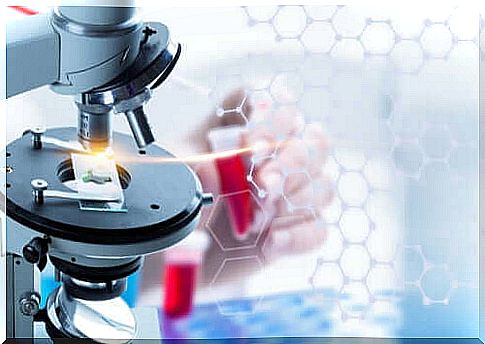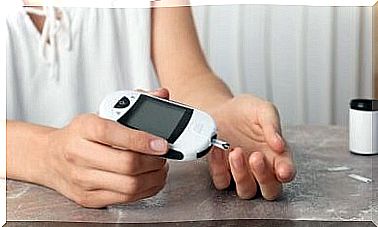What Is A Liquid Biopsy?
A liquid biopsy can be any biological fluid, such as blood, urine, or pleural fluid, in which a biomarker can be determined. This is a technique that has certain advantages over conventional biopsy and is very useful for monitoring cancer patients.

Liquid biopsy is a method of characterizing a tumor which is also known as a “blood biomarker test”. Until now, the only method to determine the type of tumor has been a tissue biopsy. However, the latter presents a certain number of limitations which have led to the development of new, less invasive techniques such as liquid biopsy.
This type of method searches for, quantifies and characterizes tumor cells, as well as the DNA of their nucleus or DNA fragments in the blood circulating in cancer patients. The most popular goal is to count tumor cells in the blood to predict survival. The higher the number of tumor cells, the poorer the prognosis. This type of method is applicable in the context of breast, prostate, colon, rectum and lung cancer, among others.
A liquid biopsy can be any biological fluid, such as blood, urine, or pleural fluid. A biomarker can be determined in those fluids which, like a tissue biopsy, are representative of the tissue in which the biomarker is produced.
The limits of tissue biopsy

As we mentioned, tissue biopsy, although it is one of the best methods to determine the characteristics of a tumor, has a set of disadvantages when performing. First, it requires a sample of the tumor. It is therefore an invasive technique because it requires a small surgical intervention. Which is uncomfortable for the patient.
Like all surgeries, it may not be an adequate option for some patients in difficult situations or at an advanced stage of the disease. Another limitation is that the tissue chosen for the biopsy may not be the most relevant nor the most representative for a complete evaluation of the tumor. Moreover, the results may take several days to arrive.
On the other hand, the tissue biopsy only makes it possible to know the state of mutation of the tumor at a precise moment. For follow-up, the patient must therefore be subjected to several surgical procedures throughout the development of the disease. In addition, if the sample taken first is not recent and corresponds to another stage of the disease, it may not be the best option to decide on the first line of treatment for the patient.
Finally, a final limitation is that, depending on the location of the tumor, the biopsy may not be possible. In this case, the use of liquid biopsy is advantageous.
Benefits of liquid biopsy
The liquid biopsy offers the advantage of detecting mutations in certain tumors in a fast, sensitive, comfortable and reliable way. Both for the patient and for the oncologist. It also makes it possible to detect mutations in the DNA present in the blood. As well as determining the best treatment from the options available.
In addition, it is a much less invasive technique than a conventional biopsy. It is carried out by a simple blood test and through advanced and ultra-sensitive analysis techniques. Like, for example, BEAMing technology.
Since it only requires a blood sample, a liquid biopsy can be done without affecting the person’s well-being. It is also accessible to a greater number of patients than tissue biopsy. This therefore means that disease data can be obtained in real time.
Finally, it is important to specify that the liquid biopsy is representative of all the tumor tissue. And not of a single part as is the case with a tissue biopsy. It also makes it possible to have a follow-up of the disease over time. Which was a limit of tissue biopsy.
When should the liquid biopsy be done?

Liquid biopsy is indicated when the initial tissue biopsy failed to obtain enough tissue. Another indication is when the tumor is located in a place that is difficult to access, among these difficult places we can mention:
- Brain
- Bone
- Lung
It also occurs when the patient does not respond to treatment and refuses to undergo an additional conventional biopsy.
Conclusion…
The practice of liquid biopsy is a very useful method that can replace the invasive technique performed so far. It has many advantages over tissue biopsy. However, it is still being studied in order to exploit it to the maximum.









